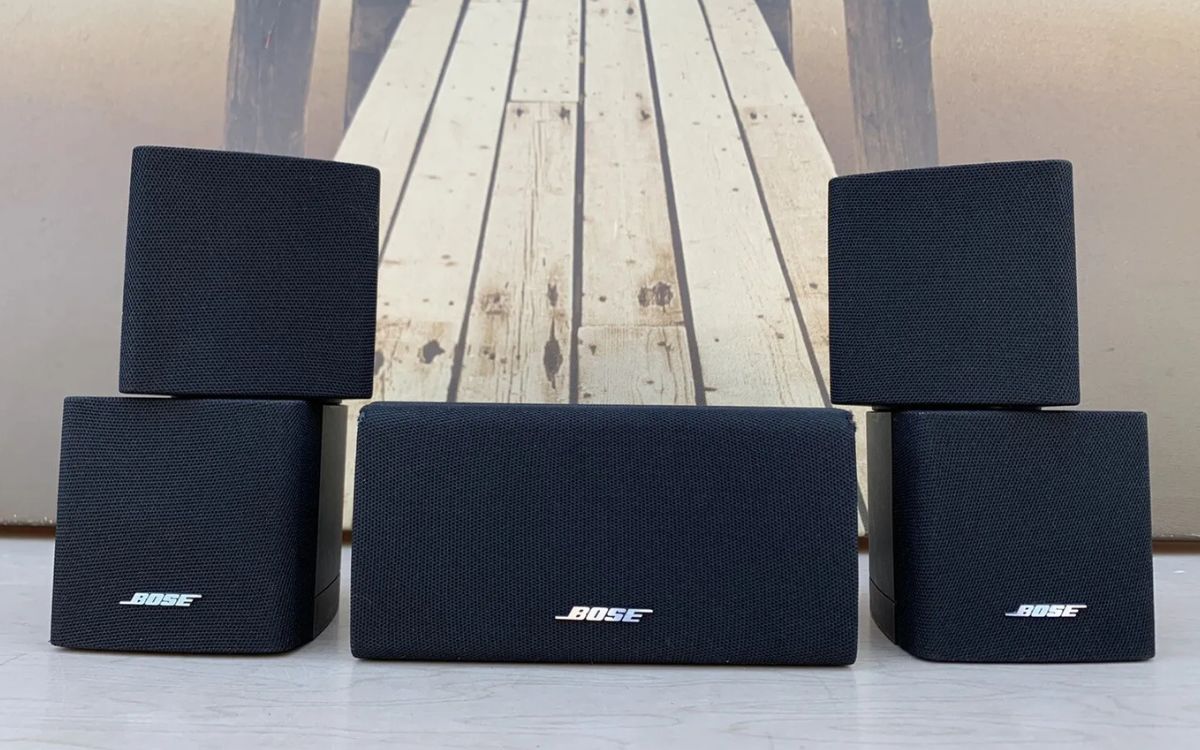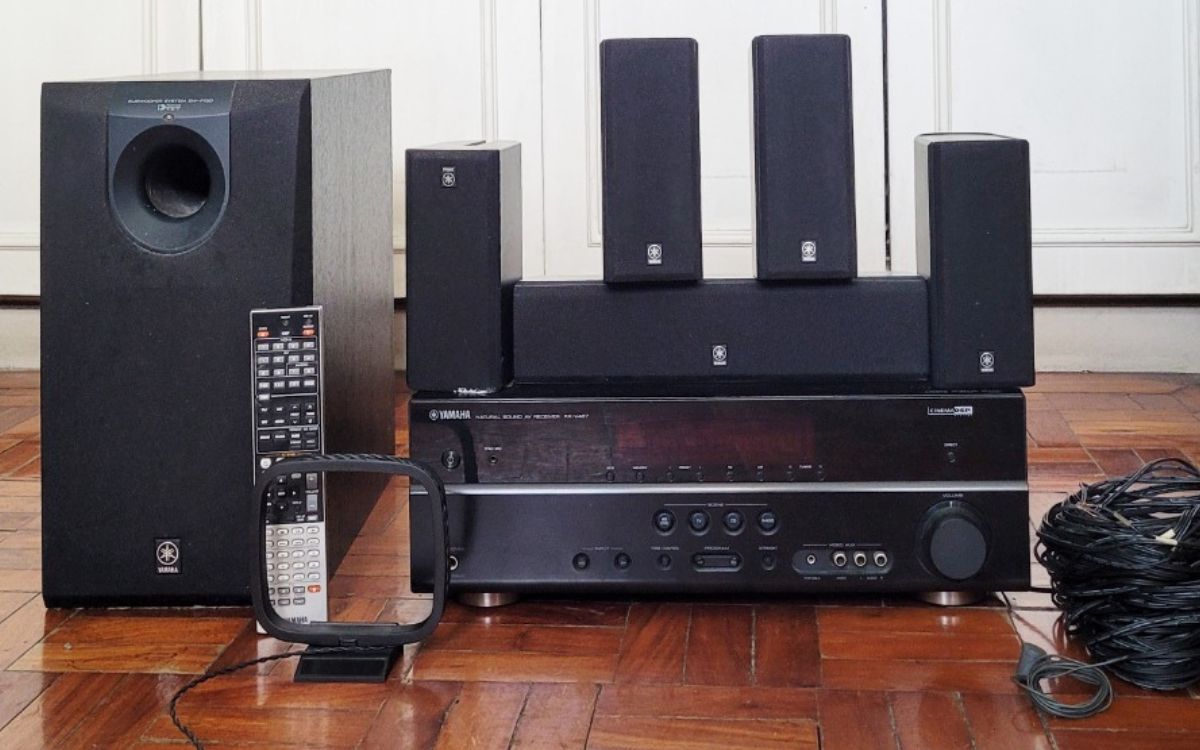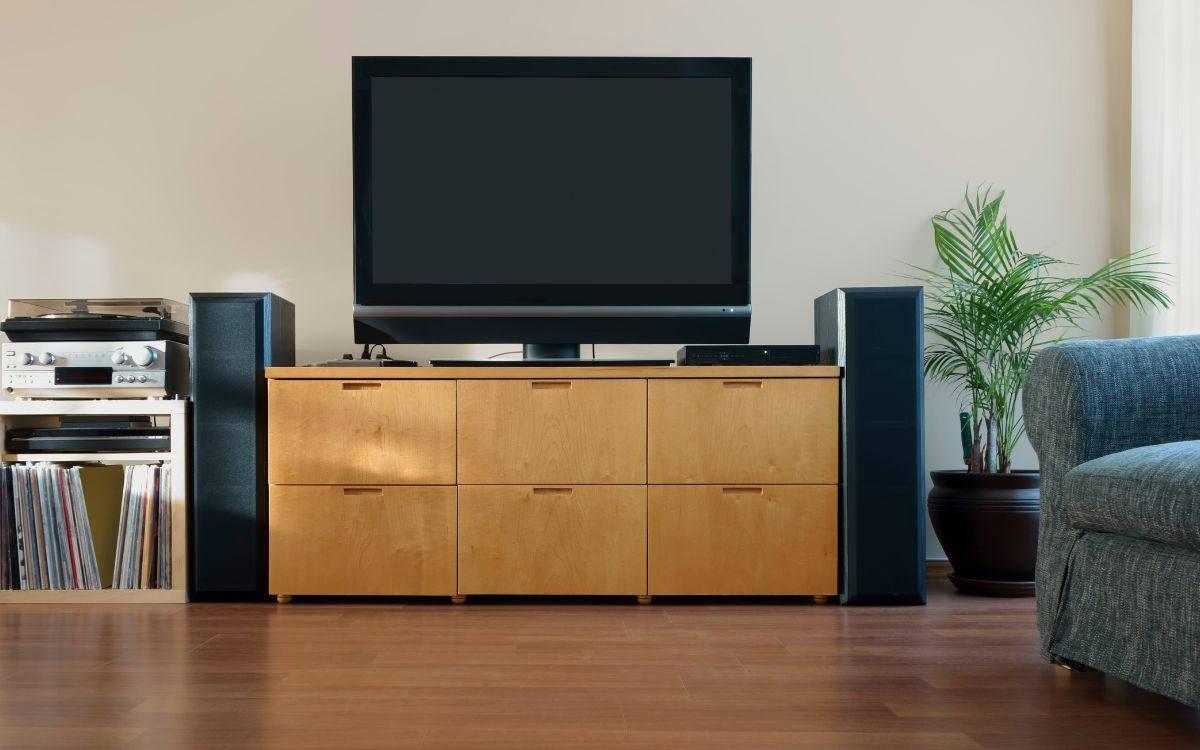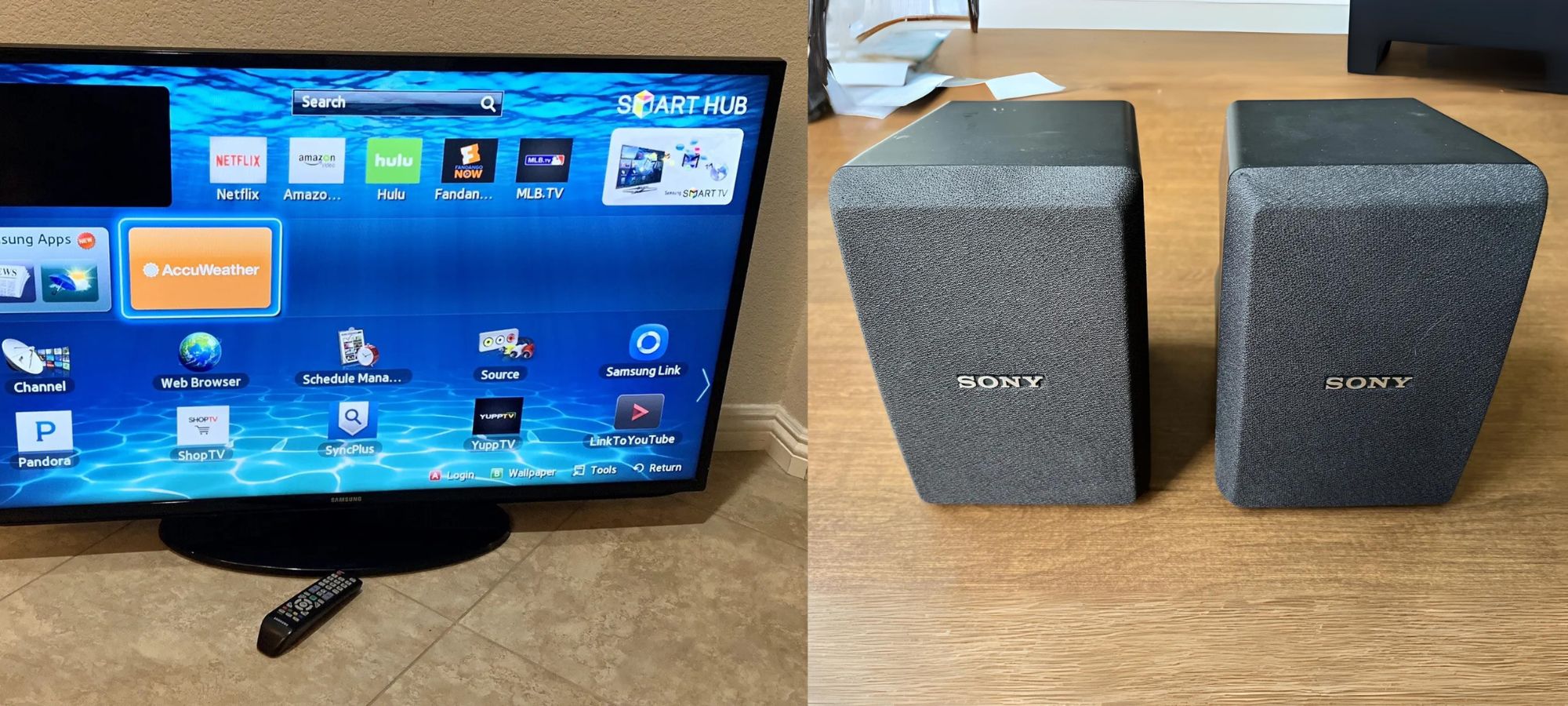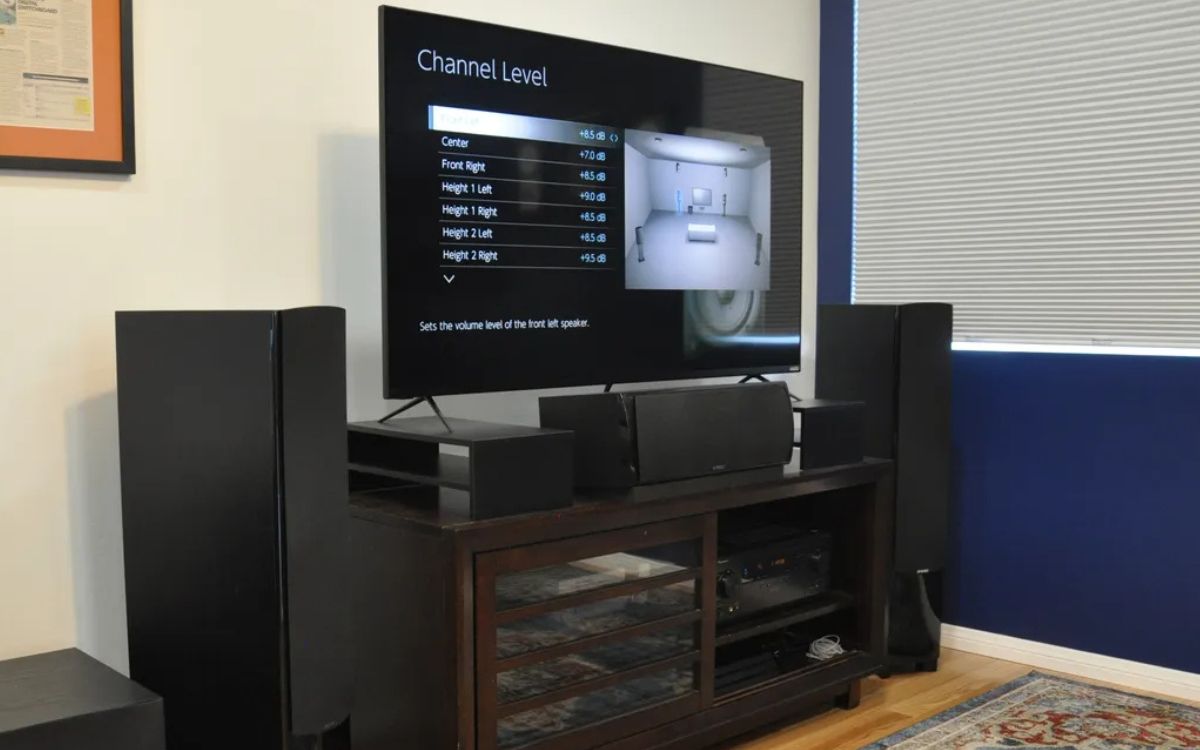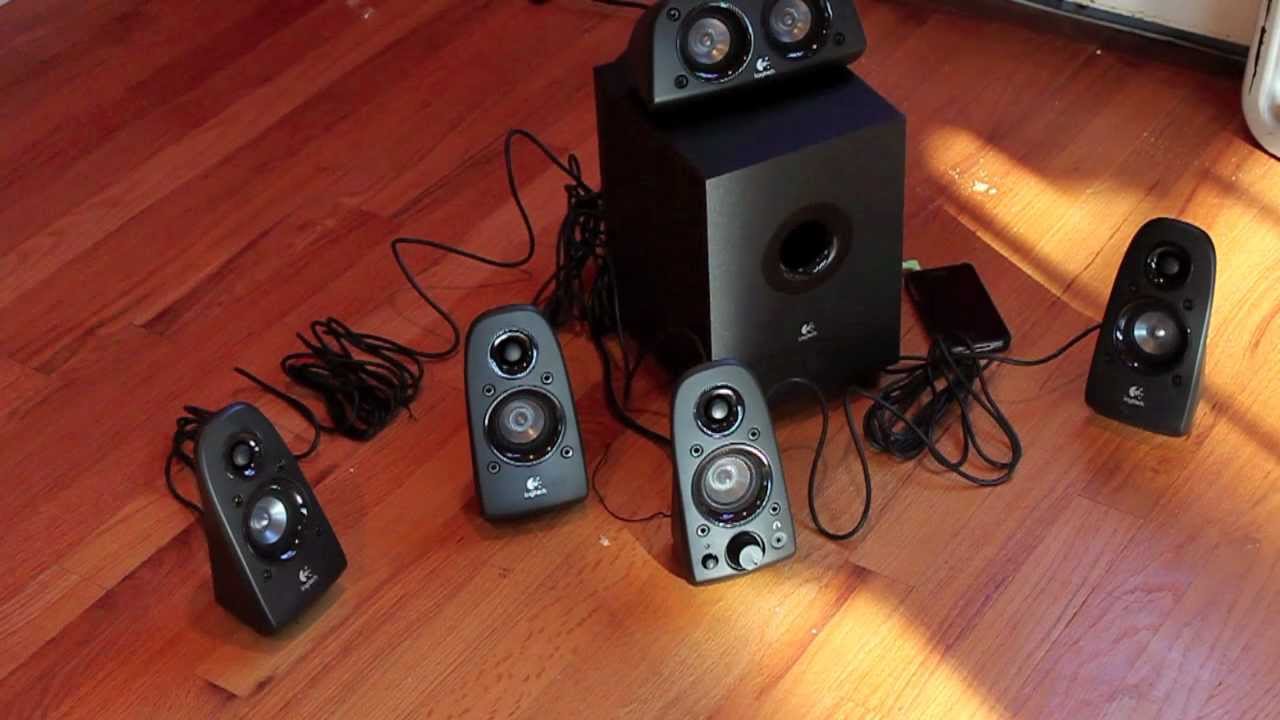Home>Production & Technology>Surround Sound>How To Connect Surround Sound To Blu Ray Player
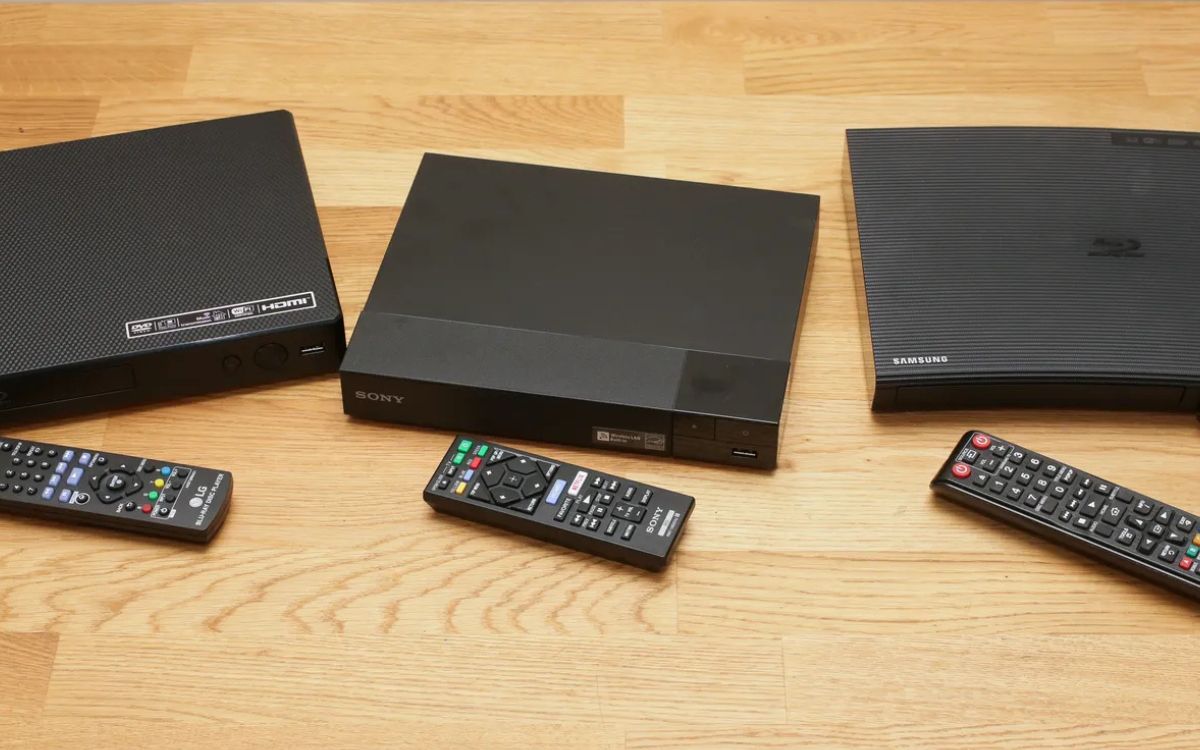

Surround Sound
How To Connect Surround Sound To Blu Ray Player
Modified: January 22, 2024
Learn how to connect your surround sound system to your Blu Ray player for an immersive audio experience. Follow our step-by-step guide and optimize your home entertainment setup with Surround Sound.
(Many of the links in this article redirect to a specific reviewed product. Your purchase of these products through affiliate links helps to generate commission for AudioLover.com, at no extra cost. Learn more)
Table of Contents
- Introduction
- Step 1: Check your Blu-ray Player and Surround Sound System
- Step 2: Connect the Blu-ray Player to the Surround Sound System
- Step 3: Choose the Appropriate Audio Connection
- Step 4: Connect the Audio Cables
- Step 5: Adjust the Audio Settings on the Blu-ray Player
- Step 6: Test the Surround Sound System with a Blu-ray Disc
- Conclusion
Introduction
Welcome to the world of immersive audio with Surround Sound! If you’re a movie lover or a music enthusiast, there’s nothing quite like the experience of having high-quality audio envelop you from all directions. Whether you’re hosting a movie night with friends or simply enjoying your favorite tunes, a Surround Sound system can take your entertainment to the next level.
In this article, we will guide you through the process of connecting your Blu-ray player to a Surround Sound system, ensuring that you get the full benefits of rich, dynamic sound. Don’t worry if you’re not a tech-savvy person – we’ll break down each step and provide clear instructions to make the process easy and straightforward.
Before we dive into the details, it’s essential to note that there are various types of Surround Sound setups available in the market. From 5.1 configurations to more advanced systems like 7.1 or even 9.1, you can choose the setup that suits your preferences and budget. In this article, we’ll focus on the general process of connecting a Blu-ray player to a Surround Sound system, regardless of the specific configuration.
So, without further ado, let’s get started on how to connect your Surround Sound system to a Blu-ray player and unlock the true potential of your home theater experience!
Step 1: Check your Blu-ray Player and Surround Sound System
Before diving into the connection process, it’s important to ensure that your Blu-ray player and Surround Sound system are compatible and in good working condition. Here are a few things you should check:
- Verify the audio output options of your Blu-ray player. Most Blu-ray players have multiple audio output options, including HDMI, digital optical, and analog RCA. Make sure your Surround Sound system supports at least one of these options.
- Check the available audio input options on your Surround Sound system. Typical options include HDMI, digital optical, and analog RCA. Ensure that your Blu-ray player has compatible outputs.
- Inspect the cables and connectors. Make sure all the necessary cables are intact and in good condition. If any cables are damaged, it’s advisable to replace them before proceeding.
- Ensure that your Surround Sound system is properly set up and functioning correctly. Check the connections between the speakers and the receiver, and make sure all the speakers are working as expected.
If everything checks out and your devices are compatible, you’re ready to move on to the next step. However, if you encounter any compatibility issues or technical difficulties, consult the user manuals of your Blu-ray player and Surround Sound system or reach out to their respective customer support for assistance.
Remember, a successful connection relies on the compatibility of your devices, so it’s important to thoroughly check them before proceeding. With everything in order, you’re now prepared to embark on your Surround Sound journey!
Step 2: Connect the Blu-ray Player to the Surround Sound System
Now that you’ve verified the compatibility of your Blu-ray player and Surround Sound system, it’s time to connect them. Follow these steps to establish the connection:
- Locate the audio output ports on your Blu-ray player. Most Blu-ray players have HDMI, digital optical, and analog RCA outputs. Choose the output option that is supported by your Surround Sound system and provides the best audio quality.
- Find the corresponding audio input ports on your Surround Sound system. Look for HDMI, digital optical, or analog RCA inputs that match the output ports on your Blu-ray player.
- If you are using an HDMI connection, simply connect one end of the HDMI cable to the HDMI output port of your Blu-ray player and the other end to the HDMI input port of your Surround Sound system. This single cable will transmit both audio and video signals.
- If you are using a digital optical or analog RCA connection, connect one end of the respective audio cable to the audio output port of your Blu-ray player and the other end to the corresponding audio input port of your Surround Sound system. Make sure to match the color-coded connectors and tighten them securely.
- If you are using a separate audio receiver with your Surround Sound system, connect the Blu-ray player to the receiver first and then connect the receiver to the speakers. This setup allows the receiver to handle the audio processing and distribution to the speakers.
Once the physical connections are made, power on your Blu-ray player and Surround Sound system. Make sure to select the appropriate input source on your Surround Sound system that corresponds to the connected Blu-ray player.
With the Blu-ray player and Surround Sound system successfully connected, you’ve laid the foundation for an immersive audio experience. The next steps involve choosing the appropriate audio settings and adjusting the sound to your liking, which we will cover in the following sections.
Step 3: Choose the Appropriate Audio Connection
After connecting your Blu-ray player to the Surround Sound system, it’s important to select the appropriate audio connection settings. The choice of audio connection will depend on the available options on your devices and the desired audio quality. Here are the common audio connection options and their benefits:
- HDMI: HDMI (High-Definition Multimedia Interface) is the most popular and versatile audio connection option. It allows for both high-quality audio and video transmission through a single cable. HDMI supports various audio formats, including Dolby TrueHD and DTS-HD Master Audio, providing immersive surround sound.
- Digital Optical: Digital optical, also known as TOSLINK, is a digital audio connection that transmits audio signals through an optical cable. It supports formats like Dolby Digital and DTS, offering excellent audio quality. Digital optical connections are a viable choice if your devices have compatible ports.
- Analog RCA: Analog RCA connections use separate cables for left and right audio channels. While not as common for modern systems, analog RCA connections can still deliver decent audio quality. This option is suitable if your devices only have RCA ports available.
When selecting the audio connection, consider the capabilities of your Blu-ray player and Surround Sound system. Refer to their user manuals to ensure compatibility and determine which audio formats are supported. HDMI is generally recommended for its convenience and ability to transmit high-quality audio and video signals. However, if your devices don’t have HDMI ports, digital optical or analog RCA connections can still provide satisfactory audio performance.
Once you’ve chosen the appropriate audio connection, move on to the next step to complete the setup process and optimize the audio settings for an exceptional Surround Sound experience.
Step 4: Connect the Audio Cables
With the appropriate audio connection selected, it’s time to connect the audio cables to ensure proper audio transmission between your Blu-ray player and Surround Sound system. Follow these steps to connect the audio cables:
- If you are using an HDMI connection, ensure the HDMI cable is securely plugged into the HDMI output port of your Blu-ray player and the HDMI input port of your Surround Sound system.
- If you are using a digital optical connection, connect one end of the digital optical cable to the digital optical output port of your Blu-ray player and the other end to the digital optical input port of your Surround Sound system.
- If you are using an analog RCA connection, connect the red and white RCA cables to the corresponding audio output ports of your Blu-ray player, matching the colors of the connectors. Then, plug the other ends of the cables into the audio input ports of your Surround Sound system.
- Ensure that all cable connections are secure and tightly connected to prevent audio interference or loss.
It’s important to note that if you are using HDMI or digital optical connections, these cables will transmit both audio and video signals. Therefore, you will not need to make an additional video connection between your Blu-ray player and your TV or display device.
Once the audio cables are connected, power on your Blu-ray player and Surround Sound system, and set your Surround Sound system to the appropriate audio input source. Your devices should now be ready to deliver captivating surround sound for your audio and video content.
Before proceeding to the next step, it’s recommended to perform a quick audio test to ensure that all the connections are working correctly. Play a test sound or a sample video with surround sound to verify that the audio is being outputted from all the speakers in your system.
Step 5: Adjust the Audio Settings on the Blu-ray Player
To fully optimize your Surround Sound experience, it’s essential to adjust the audio settings on your Blu-ray player. Here are the key settings to consider:
- Audio Output Format: Access the settings menu on your Blu-ray player and navigate to the audio output section. Select the appropriate audio format that is supported by your Surround Sound system. Common options include PCM, Bitstream (Dolby Digital), and Bitstream (DTS). Consult the user manual of your Surround Sound system to determine the recommended audio format.
- Speaker Configuration: Configure the speaker setup in the audio settings menu to match your Surround Sound system. Specify the number of speakers and whether you have a subwoofer connected. This ensures that the audio is correctly balanced and distributed among the speakers for an immersive surround sound experience.
- Audio Modes and Effects: Explore the audio modes and effects available on your Blu-ray player. These settings can enhance the audio quality and provide various sound effects like movie theater mode, music mode, or virtual surround sound. Experiment with different modes to find the one that suits your preference.
- Dynamic Range Compression: Some Blu-ray players offer Dynamic Range Compression (DRC) settings. These settings adjust the volume level between soft and loud sounds, ensuring that the audio remains balanced and clear, especially during action sequences or quiet dialogues. Enable or adjust DRC based on your listening environment and personal preference.
It’s important to note that the menu layout and available settings may vary between different Blu-ray player models. Refer to the user manual for specific instructions on accessing and adjusting the audio settings on your Blu-ray player.
Once you have adjusted the audio settings to your liking, save the changes and proceed to the final step of testing your Surround Sound system with a Blu-ray disc or audio content.
Step 6: Test the Surround Sound System with a Blu-ray Disc
Now that you have completed the setup and adjusted the audio settings, it’s time to put your Surround Sound system to the test by playing a Blu-ray disc or audio content. Follow these steps to ensure everything is working as intended:
- Insert a Blu-ray disc with surround sound capabilities into your Blu-ray player.
- Navigate to the disc’s menu on your TV screen and select the desired audio track or surround sound format.
- Start playing the Blu-ray disc and pay attention to the audio. Listen for sound effects coming from different speakers as well as the overall clarity and balance of the audio.
- During playback, you can further fine-tune the audio settings on both your Blu-ray player and Surround Sound system to optimize the sound quality to your preference.
- Take note of any issues or imbalances in the audio. If you experience low or no sound from certain speakers, verify the connections and settings to ensure everything is correctly set up.
- Experiment with different Blu-ray discs or audio content to test the compatibility and performance of your Surround Sound system across a variety of media.
By testing the Surround Sound system with different content, you can identify any potential issues and make necessary adjustments to achieve the best audio experience for your home theater setup. Remember, every Blu-ray disc or audio source may have different audio settings, so don’t hesitate to explore the options and tailor the settings to your liking.
Congratulations! You have successfully connected and tested your Blu-ray player with your Surround Sound system. Sit back, relax, and enjoy the immersive audio experience that Surround Sound brings to your home entertainment.
Conclusion
Connecting your Blu-ray player to a Surround Sound system can elevate your audio experience to new heights. By following the steps outlined in this guide, you have learned how to seamlessly link these devices and optimize the audio settings for a truly immersive Surround Sound experience.
Remember to check the compatibility of your Blu-ray player and Surround Sound system, choose the appropriate audio connection, and ensure tight and secure cable connections. Adjusting the audio settings on your Blu-ray player and performing a thorough test with different Blu-ray discs or audio content will help you fine-tune the audio performance to your liking.
With Surround Sound, you’ll be able to enjoy movies, music, and other forms of entertainment in a whole new way. The multidimensional and enveloping audio will transport you directly into the heart of the action, enhancing your overall viewing or listening pleasure.
Don’t settle for average audio quality when you can have an extraordinary audio experience. Follow these steps, unleash the power of your Surround Sound system, and immerse yourself in a world of captivating soundscapes.
Now that you have the knowledge, it’s time to put it into action. Connect your Blu-ray player to your Surround Sound system and embark on a thrilling audio adventure!



